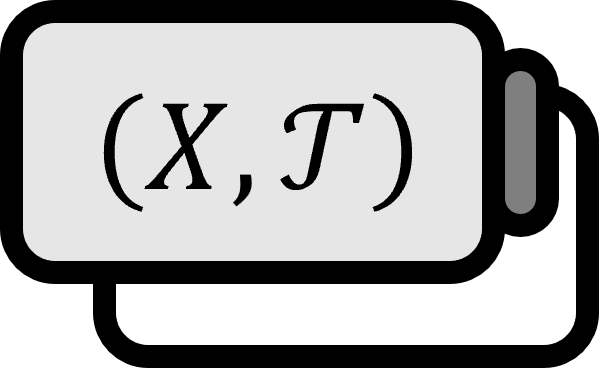What is a Torus in Mathematics?
Definition

The square of the sphere $1$, denoted as $S^{1} \times S^{1} = [0,1] \times [0,1]$, and the quotient space $T$ that is homeomorphic to it according to the map shown above, is called a Torus. In the figure, the donut shape on the far right is an example of a torus.
Description
The torus is a space - more specifically, a figure - that is treated very preciously throughout mathematics. It invariably appears in the image of topology known to the public (like the doughnut is homeomorphic to a coffee cup and so on).
Poincaré Conjecture
The Poincaré conjecture, proposed by the great French mathematician Henri Poincaré and proven by Grigori Perelman, states:
Poincaré Conjecture: If every simple closed curve on a closed $3$-dimensional manifold can be contracted to a point, then the space can be transformed into a sphere.

Although the torus is not necessarily crucial to this conjecture, it serves as the simplest example that even non-specialists can instantly understand. For instance, if we were to loop a red string around the surface of the torus as shown in the picture, shrinking it to a point would be impossible due to the doughnut hole. The Poincaré conjecture, conversely, asks if having such closed curves always contractible to a point guarantees that the space is a sphere without a doughnut hole.
Algebraic Topology

In fact, to create a torus, a square $S^{1} \times S^{1}$ is sufficient without the need for a simplex complex, i.e., a simplicial complex. However, to engage in meaningful algebraic investigations of the structure resulting from a $\Delta$-complex](../2381), the following $6$ maps are necessary.

This is a projection view of the torus from above. $\sigma_{a}$, $\sigma_{b}$, $\sigma_{v}$ represent mappings that act as a sort of ‘skeleton’ in the naive method of creating a torus. $\sigma_{b}$ rolls the square into a cylinder, and $\sigma_{a}$ connects the ends of that cylinder to form a doughnut. Here, the vertices of the square must converge precisely to one point, and $\sigma_{v}$ fulfills this role.

This is a side-projection view of the torus. $\sigma_{U}$, $\sigma_{L}$ map out the ‘faces’, so to speak, that fill in between the skeleton. It’s worth reiterating that $\sigma_{c}$ is not strictly necessary when considering only the torus, but becomes relevant when viewing the square as a union of two triangles and pertaining to mapping their boundaries.
Periodic Boundary Conditions
A torus can also be considered as a unit square $[0,1] \times [0,1]$ with Periodic Boundary Conditions applied. In the following image, the golfer’s ball seems to exit beyond the boundary of $S^{1} \times S^{1}$ at first glance. However, were this shot taken on a torus, the ball would end up falling behind the golfer.

Naturally, this phenomenon doesn’t only occur on the left and right boundaries but also on the top and bottom periodic boundaries $b$. Viewing a square as a torus is thus a concise way of expressing that “boundaries have periodicity, so reaching one edge brings you out on the opposite edge.”
Infinite Plane
Though it sounds the same as periodic boundary conditions, viewing this space differently can open up new applications. Consider, for example, ignoring the geography where certain organisms are situated in ecological studies and assuming that the interactions among them occur uniformly throughout the entire space.

Imagine laying out the square, which unfolds the torus, as shown in the above figure, aligning with the boundary. A single torus thus effectively represents part of an infinite plane. If conducting a simulation, a simulation on a single torus could be considered, without loss of generality, as a simulation on an infinite plane.
Properties
Coordinate Chart Mapping
The coordinate chart mapping of a 3-dimensional torus with the distance from the center to the tube as $R$ and the diameter of the tube as $r$ is as follows, regarding $(u_{1}, u_{2}) \in [0, 2\pi) \times [0, 2\pi)$:
$$ \mathbf{x}(u_{1}, u_{2}) = \left( (R + r\cos u_{2})\cos u_{1}, (R + r\cos u_{2})\sin u_{1}, r\sin u_{1} \right) $$
Simple Connectivity
The torus $T^{2}$ is not simply connected.
